
Valerie Otani addresses the theme of Japanese relocation during World War II at the site of the 1942 Portland Assembly Center.Traditional Japanese timber gates strung with metal "internee ID tags" mark station entrances. Vintage news articles are etched in steel and wrapped around the gate legs.
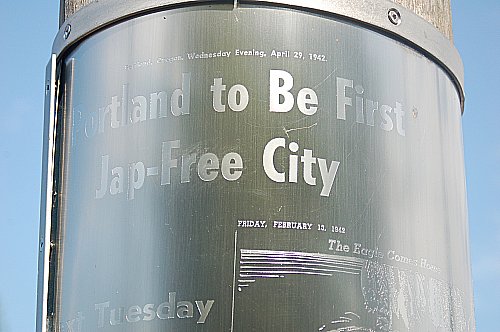
Bronze trunks provide seating on the platforms.
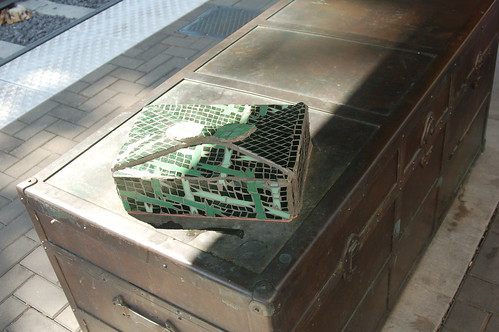
Community maps feature the floor plan of the converted livestock exhibition hall and a copy of the exclusion order.
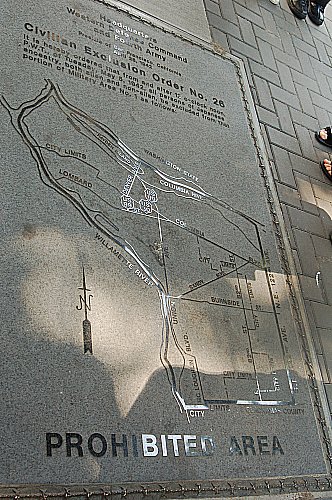
Info from the PCPA Volunteers Newsletter:
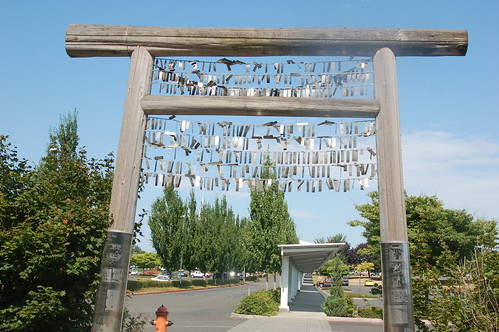
Expo Center station was perhaps the most meaningful of our trip. Valerie Otani was the artist and she designed large timber gates reminiscent of those found in Asia. The gates reflect a transition, or an entrance, or beginning. The Expo Center was historically a livestock yard, but was converted into a temporary WWII internment center for those of Japanese descent.
At the top of the large gate are 4000 metal tags in commemoration of the 4000 internees located there. The tags resemble the ID tags required for all Japanese to wear.
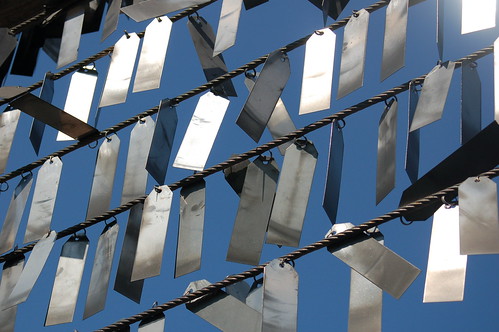
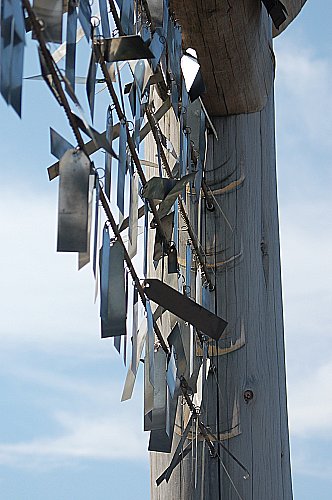
The base of each gate is wrapped in metal to protect its wooden structure – since this is art for the public and must be able to withstand public use. Some metal wrappings are etched with actual newspaper accounts of the time of internment which are shocking (and saddening) to our eyes.
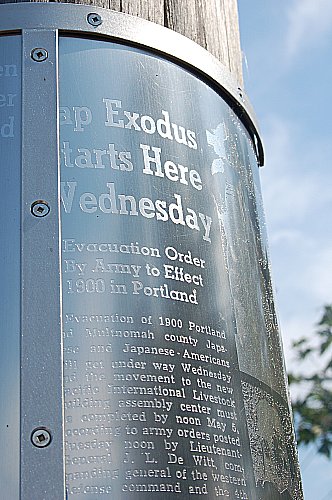

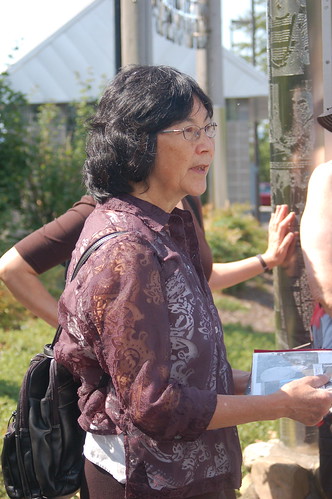
Ms. Otani is of Japanese descent and told us of her family’s story. Her immediate family lived in California and they were interned there. Her grandfather had lived in Hawaii for 30 years before the night of Pearl Harbor when he, and other leaders in the Japanese community, were arrested. He returned to Japan after the war and never saw his U.S. family again.
1 comment:
Congratulations on your success as a photographer and your picture being published. Wonderful contribution on the scandal of the treatment of Japanese-Americans.
Post a Comment